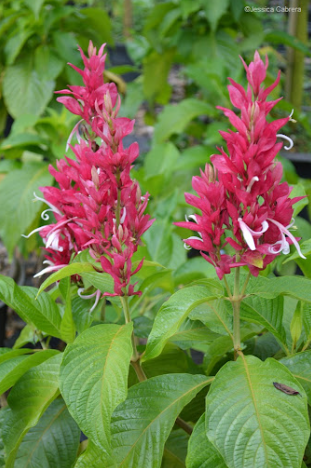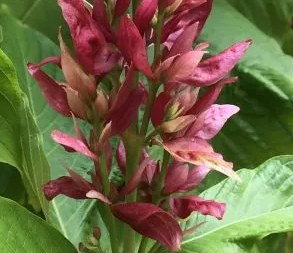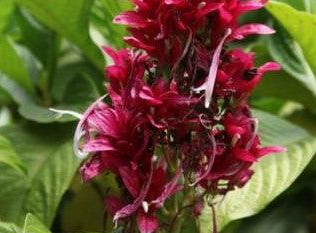Brazilian Red-Cloak Plant
Brazilian Red-Cloak is a tropical shrub that grows quickly in fertile, well-draining soil and partial shade. It does not have edible or medicinal uses but is grown for its vibrant flowers.

Habit
Shrub
Height
2-3m
Growth
Fast
Soil
Well-drained
Shade
Partial Shade
Moisture
Moderate
Edible
No
Medicinal
No
Origin
Brazil
Climatic Condition
Warm, humid
Temperature (°)
18-30°C
Humidity (%)
60-80%
Potting media
Organic compost
Fertilizers
Balanced NPK
Watering
Moderate
Plant Weight
N/A
Flowering Time
Late summer to winter
Soil Ph level
5.5-7.0
Water Ph level
6.0-7.0
Soil EC
Low
Yield Per Plant
Ornamental use
NPK ratio
10:10:10
life Span
5-8 years
Health Benefits
Antioxidant properties
Suggested Grow Media or Potting Mix ?
40% peat moss, 30% compost, 30% sand
Suggested Fertigation/Fertilizers
Fertilize bi-monthly with balanced fertilizer
Common Diseases and Remedies
Leaf Spot, Aphids, Mealybugs
Yellowing, sticky residue
Systemic fungicides, insecticides
HEALTH BENEFITS
Air purification
· The plant's large leaves absorb indoor pollutants and release oxygen.
Stress relief
· The plant's presence may promote mental well-being.
Pollinator attraction
· The plant's red blooms attract bees, butterflies, hummingbirds, and moths.
Other uses
· The plant can be used as a specimen plant, informal hedge, screen, container plant, houseplant, or landscape plant.
Toxicity
However, the Brazilian Red Cloak is also toxic to humans. Symptoms of toxicity include:
Vomiting, Excessive salivation, Difficulty swallowing, Abdominal pain, Diarrhea, Lethargy, Difficulty breathing, Dizziness, and Headaches

